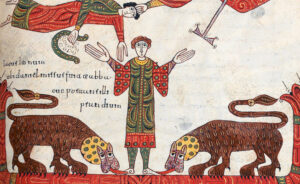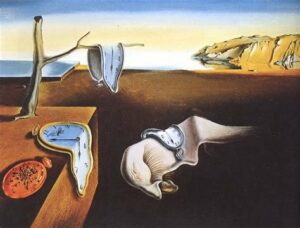
Friend, are you heading to a birthday or baby shower? If you like bringing books as gifts, and want the books to be meaningful, I’d steer away from tiresome sloganeering a-la-A-is-for-Activist and offer some actual content instead. I especially recommend two books I read with my son in recent years: The Gardener of Alcatraz and Milo Imagines the World. In case one wonders, why would I want to expose my kid to prison? it’s worth remembering that many kids are exposed to prison through the incarceration of family members and friends; that prison is constantly on the news, and so you’d be better off exercising some judgment over the narrative; and that, given that about 1 in 150 Americans is incarcerated, your child will come across prison or imprisonment at some point.
The Gardener of Alcatraz, written by Emma Bland Smith and beautifully illustrated by Jenn Ely (see cover image above), is a story that humanizes people in prison and offers hope without slipping into cheesy melodrama. It tells the true story of Elliot Michener, sentenced for counterfeiting in 1941 and put on a boat to Alcatraz after participating in a foiled escape plan from Leavenworth.

To Smith’s credit, she does not embellish or glorify Michener. The narrative follows his arrival in the gloomy prison and his plans to escape, and very subtly and intelligently shows (without telling) his internal transformation through his garden work. Michener’s labor of love, planting and cultivating flowers throughout the island, and his friendship with the warden’s wife, are gently and delicately handled. Smith also doesn’t gloss over the fact that Michener was transferred out of Alcatraz toward the end of his sentence, which was a true blow to him and his work. The book contains an appendix full of interesting information about Alcatraz and about the gardens. It offers a very special slice of history without hitting readers over the head with “mass incarceration is wrong,” but even young readers will get a sense of the complexity of having done something wrong and at the same time being harshly punished.

Milo Imagines the World, written by Matt de la Peña and illustrated by Christian Robinson, takes us into the present, with Milo and his sister riding the Subway. Again, no sloganeering or hitting you over the head with moralizing messages; instead, you get to learn about Milo’s world implicitly, through the way he imagines the lives of the people around him. In a particularly moving sequence, he sees a troupe of street performers on the train, and later his imagination takes a dark turn, implying that if these girls go to an electronics store, they might be stopped by the police for suspected shoplifting. The meaning of the story fully unfolds toward the end, when the reader realizes that Milo and his sister are on their way to visit their mother, who is incarcerated. To his surprise, Milo sees that another boy who was riding with them is also in line to see his own mother. Which is where Robinson’s illustrations complete what de la Peña only delicately intimates: the other boy seems white and well dressed. Realizing that things are not what they seem, Milo opens his mind to imagine other things beyond his assumptions (for example, the street performing girls living together in a big, lovely house; the bride on the train marrying another bride, rather than a groom; the gloomy man eating his dinner with a loving family, rather than just with cats), including a future where he, his sister, and his mom, now free, all sit in front of their building and eat ice cream together. I’ve been a fan of de la Peña’s work since I read the wonderful Last Stop on Market Street, which humanizes street people and shelter workers without being condescending or too explicit.
The more I see of my son’s educational journey at Red Bridge School, the more I realize that children are very smart and perceptive; teaching them stupid things and hitting them over the head with things they can discern from better crafted materials is a waste of their intellect and sensitivity. Gardener and Milo are two examples of how to thoughtfully introduce children to the painful topic of incarceration in a way that engenders empathy and complex reasoning.




No comment yet, add your voice below!